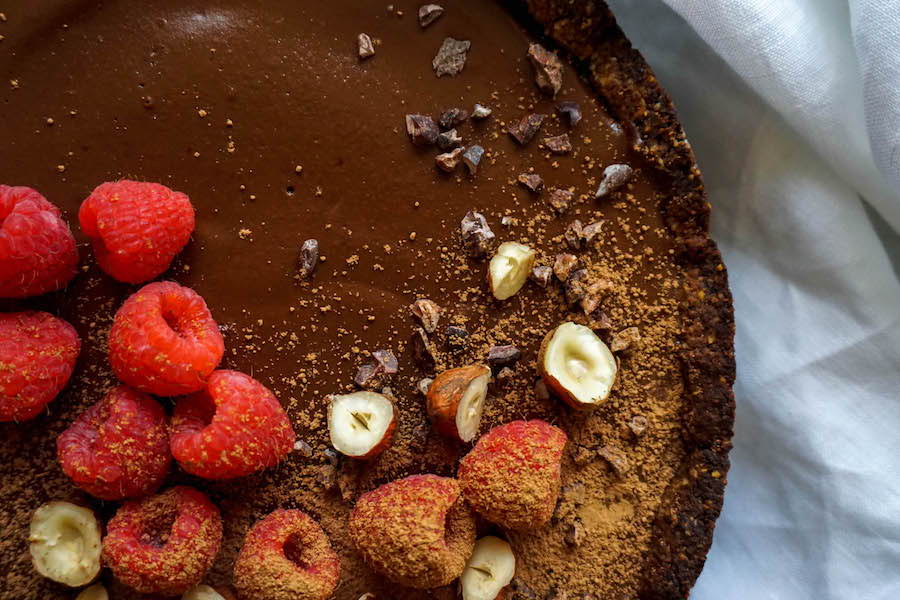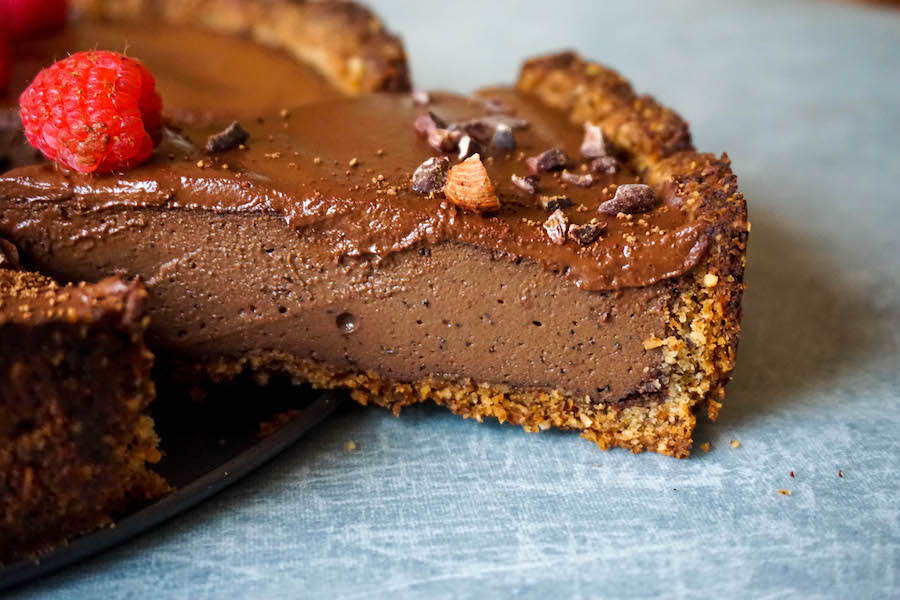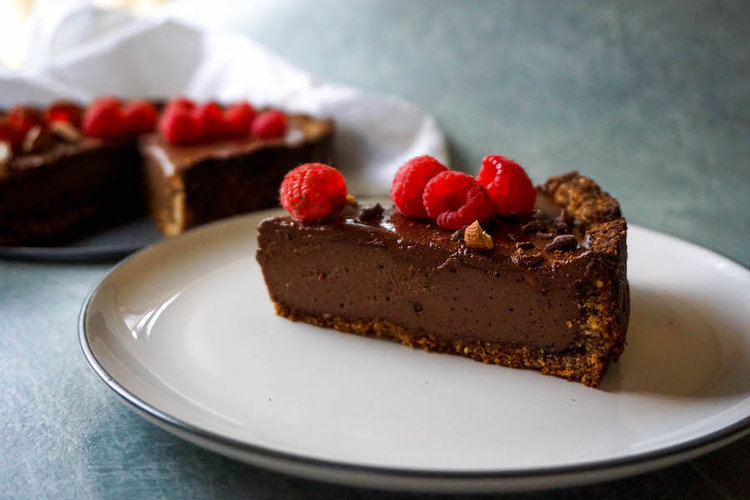Want to learn how to eat better? Get one simple, evidence-based nutrition tip weekly to your email - get access here.
Check Out My Recipe Video Below:
Prefer Written Format? Keep Scrolling!
About This Recipe
Is soy bad for you?
Let’s clear up some confusion: recently I’ve come across some strong beliefs about the negative health effects of soy products.
Research suggests that genetically modified (GMO) soy products can have a hormone-disrupting effect due to exposure to pesticides.
This is bad news for the development of hormone-dependent cancers such as breast cancer.
However, the majority of soy products available are non-GMO and many are organic. What about these products? Do they still have the potential to cause cancer?

In complete contrast to popular belief, whole, non-GMO soy products like tofu, tempeh, miso and edamame have been shown to be protective against breast cancer.
A large study of 5,000 breast cancer survivors concluded that consumption of 1-2 serves of soy products daily was associated with significant decreased risk of death and reoccurrence of breast cancer.
Therefore, non-GMO soy products not only reduce cancer risk, but also increase survival rates.

The common misbelief that ‘all soy is bad’ comes from confusion about soy’s estrogen-like effects.
Soy contains isoflavones which mimic the effects of the female hormone estrogen.
As estrogen can promote the growth of breast cancers, there is a common misconception that isoflavone-containing foods can have the same effect.
Current research shows that isoflavones are actually selective, meaning that they can turn on or off estrogen receptors in different tissues, depending on what the body needs.
In this way, they can reduce the body’s sensitivity to estrogen and therefore reduce breast (and other estrogen-dependent) cancer risk.

1 in 8 women will develop breast cancer by the age of 85.
As one of the most staggeringly common cancers, it is so important that we discuss the research and examine the links between diet and development of disease before making blanket statements that we should avoid all soy products.
Does this mean you should run out and fill your fridge with processed soy protein products like vegetarian mock meats and soy cheeses? No.
Focus on "whole", traditional soy products like tofu, whole edamame beans (immature soy beans), and soy milk that is made from whole soy beans not isolated soy protein.
Until further research comes out, it is recommended to stick to 1-2 serves of soy products a day as the effect of higher intakes has not been properly studied.
Tell me about the tart!
Okay, now we have that out of the way, I have a pretty special recipe for you all that proves that getting more soy into your diet doesn’t have to stop at savoury foods.
This Chocolate Expresso Tart with Hazelnut Crust is so silky smooth and decadent.
You would never guess that the secret ingredient to this perfect texture is – tofu!

Cased in a crispy, hazelnutty crust, filled with rich, velvety chocolate espresso mousse, and topped with a thin spread of vanilla chocolate cream, desserts don’t get much better than this.
These are some of my most favourite ingredients, coming together in a delectable slice of tart.
So go forth with your new knowledge and enjoy a guilt free slice of one of the most health promoting tarts around.
How To Make This Recipe
Chocolate Espresso Tart with Hazelnut Crust

Ingredients
Hazelnut Crust
- 1.5 cups raw hazelnuts
- 3/4 cup oats (GF if needed)
- 3 Tbsp. coconut oil
- 2 Tbsp. almond milk (or water)
- 1/2 cup desiccated coconut
- Pinch salt
Filling
- 600g silken tofu (make sure you use SOFT tofu, not firm)
- 140ml coconut milk
- 3/4 cup cacao powder
- 1 tsp. vanilla essence
- 2 tsp. espresso powder (optional - omit if you don't like coffee)
- 2 Tbsp. tapioca flour
- 1 cup maple syrup (or your favourite sweetener)
Vanilla Chocoate Cream
- 1 Tbsp. coconut milk
- 2 Tbsp. almond butter
- 2 Tbsp. cacao powder
- 1 Tbsp. coconut oil
- 1 tsp. vanilla essence
Takes ,serves 8.
Instructions
- Preheat oven 180°C (350°F). Lightly grease a round springform pan (mine is 20cm wide)
- Add hazelnuts to a high strength food processor or blender and process until finely broken down and resembling a course flour
- Add all remaining ingredients for hazelnut crust and process until just coming together. The dough should stick together when pressed between two fingers. If too crumbly - add a dash of water or almond milk. If too wet - add 1 Tbsp. more oats
- Press crust mixture into the base of the pan, creating an even spread across the bottom and up the sides
- Place pan in the oven for 17 minutes, or until just golden but not brown
- Meanwhile, make the filling.
- Add all filling ingredients to blender or food processor and blend until completely smooth and creamy
- Pour filling into the baked crust and place back in the oven for around 35 minutes until firm to the touch. (The surface of the filling may crack during baking - this is totally normal and will be covered up by the vanilla chocolate cream)
- Add all chocolate cream ingredients to a small bowl and whisk to combine.
- Allow the tart to cool, then spread the cream over the top of the tart. Place in the freezer for 30 minutes to allow the cream to set
- Serve the tart with fresh berries, an extra spinkle of cacao powder and cacao nibs, if desired. Enjoy!









No Comments Yet
Be the first to share your thoughts!
Leave a Comment